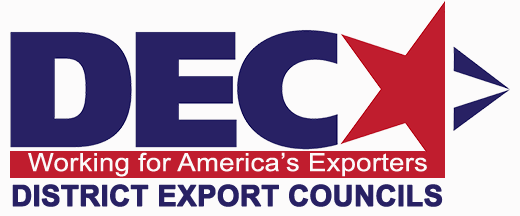At Export-U, we receive a ton of questions about exporting. Here are answers to a few of the most common.

(You may also find it helpful to access our export glossary.)–
What are HS and Schedule-B numbers?
These are number classifications for all products shipped internationally. HS numbers are used worldwide to determine import customs duties (tariffs). Schedule B Numbers are used exclusively for US exports; the first 6-digits are the HS numbers, and the final four digits give more precise product information. Since these codes are recorded for everything moving between countries, they provide an excellent trade database of product types, quantities, values, and trends. (To learn more view Webinar 2, or for a narrative click here.)
What is a Letter of Credit?
In a Letter of Credit, overseas customer’s bank issues a document stating that they will pay you when the terms of the Letter of Credit are fulfilled. Terms that could be specified include quantity, description and documentation. With a Letter of Credit you know that you will be paid, and don’t have to worry about your buyer’s willingness or ability to pay. But letters of credit can be expensive, driving up the price to your customer. (To learn more view Webinar 8, or for a narrative click here.)
What is a Pre-Shipment Inspection?
Pre-shipment inspection (PSI), is an important quality control method for checking the goods before they are shipped. It insures that the product complies with the specifications and/or the terms of a purchase order or letter of credit. A final random inspection (FRI), checks finished products when at least 80% of an order has been produced and export-packed. Samples are selected at random, according to set standards and procedures. (To learn more click here.)
Where can I find tariff rates?
One good free lookup site for overseas import tariffs and taxes is the Simply Duty website. It allows 5 free lookups per day. You can enter a product’s HS code if you know it, or use the convenient keyword search by product name if you don’t. Of course, the actual tariff charged is determined by the customs authority in the destination country, so use this tool only to estimate these charges.
Can an ATA Carnet save on tariff charges?
An ATA Carnet (pronounced kar-nay) is often referred to as a “passport for your goods.” Essentially, it is a customs document that lets you temporarily export and import nonperishable goods tax-free and duty-free for up to a year. (To learn more click here.)
What is a Shippers Export Declaration (SED)?
A U.S. Shipper’s Export Declaration (SED) was a standard United States government form required for all U.S. exports of commodities valued at US$2,500 or higher. It has been replaced by the Electronic Export Information form (EEI).
What is the Electronic Export Information form (EEI)?
If any commodity’s value within a U.S. export shipment exceeds US$2,500.00, then an EEI form must be filed with the U.S. Census Bureau. Census uses the EEI to compile trade statistics and to exert export controls. You are responsible for preparing the EEI, and the shipping carrier files it with U.S. Customs and Border Protection (CBP) through the AES or AES Direct system. (see below)
What is AES?
The Automated Export System (AES) is a computer system that collects Electronic Export Information (EEI). In many cases, the law requires you to report EEI for goods exported from the United States and its territories. (To learn more click here for a pdf user’s guide to AES.)
What is an embargo?… a sanction?
Casually, the words “embargo” and “sanction” are often used interchangeably. … Historically, an embargo is a complete ban on all commercial activity between two nations, while sanctions are more limited in scope and prohibit trade in certain types of goods or with specific individuals, companies, or entities. The United States has imposed several long-running sanctions against countries like Cuba, North Korea and Iran, and partial sanctions on many other countries. It is critical that you do not violate US sanctions or you may be put in severe legal jeopardy. (To learn more view Webinar 12B.)
What are Incoterms?
Incoterms are global rules that define the responsibilities of sellers and buyers for the international shipment and delivery of goods under sales contracts. They spell out precisely who’s responsible for the shipping, insurance, and tariffs. They significantly reduce the chance of misunderstandings between the two parties, and this helps to minimize trade disputes and litigation. (To learn more view Webinar 7, or for a narrative click here.)
What’s a freight forwarder, and how do you choose one?
Essentially, a freight forwarder functions as a “travel agent for your goods.” The forwarder is responsible for arranging all of the logistics (land, sea, and air), the insurance, and the paperwork to move your shipment overseas. A good forwarder will save you both time and money, while making sure everything goes smoothly. There are literally hundreds of forwarders in major US cities. (Just check the yellow pages.) Your local U.S. Export Assistance Center may be able to help you select a good one. Ideally, your forwarder should be experienced with the type of product being shipped, and with exporting to your overseas destination. Also, don’t be afraid to ask for references. For an article about freight forwarders click here.
